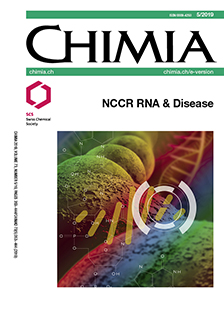Design of in vitro Transcribed mRNA Vectors for Research and Therapy
DOI:
https://doi.org/10.2533/chimia.2019.391PMID:
31118121Keywords:
Cap, Gene therapy, Globin utr, In vitro transcribed mrna, Ivt rna, VaccinationAbstract
The use of in vitro transcribed messenger RNA (ivt mRNA) for vaccination, gene therapy and cell reprograming has become increasingly popular in research and medicine. This method can be used in vitro (transfected in cells) or administered naked or formulated (lipoplexes, polyplexes, and lipopolyplexes that deliver the RNA to specific organs, such as immune structures, the lung or liver) and is designed to be an immunostimulatory or immunosilent agent. This vector contains several functional regions (Cap, 5' untranslated region, open reading frame, 3' untranslated region and poly-A tail) that can all be optimised to generate a highly efficacious ivt mRNA. In this study, we review these aspects and report on the effect of the ivt mRNA purification method on the functionality of this synthetic transient genetic vector.Downloads
Published
2019-05-29
Issue
Section
Scientific Articles
License
Copyright (c) 2019 Swiss Chemical Society

This work is licensed under a Creative Commons Attribution-NonCommercial 4.0 International License.
How to Cite
[1]
M. Tusup, L. E. French, M. De Matos, D. Gatfield, T. Kundig, S. Pascolo, Chimia 2019, 73, 391, DOI: 10.2533/chimia.2019.391.







